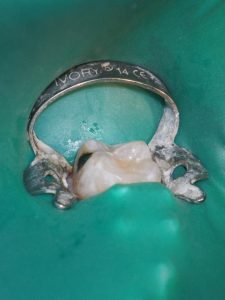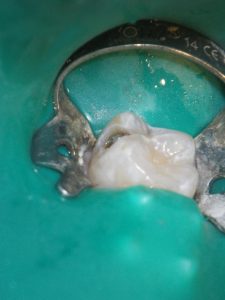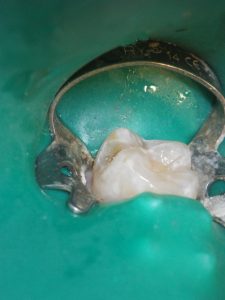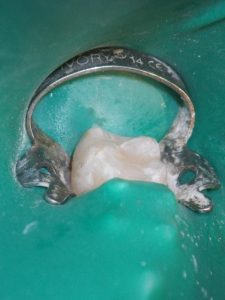It has become clear that restoring teeth with old style silver fillings is yesterday’s technology. I can give you several reasons why this is the case. They are ugly, crack teeth over time, and contain heavy metals such as silver, copper, tin and mercury. Up to 55% mercury, which is a known human toxin. It is no longer appropriate to use materials such as this in the human mouth.
The question to remove them can be complicated. If there is new decay, the choice to replace is clear but should an otherwise intact functioning restoration be replaced? It does come with some risk as every time a tooth is drilled on it could harm the nerve or cause a fracture. At best you will be left with a slightly bigger filling in the tooth.
Once the decision is made there is a correct and incorrect way to do the replacement. This is a typical case and demonstrates the proper procedure. The tooth is isolated with a rubber dam and the old restoration can be clearly seen on the left side of the tooth..
Next as my assistant uses a water spray and suction, I take the old filling out in “chunks” This minimizes the amount of mercury ground into dust as well as tooth structure removed. This is the halfway point.
Now that the old filling has been removed. In this tooth there was some decay in the back groove which has now been removed.
The new white bonded restoration has been placed. It should be rinsed and polished to remove any uncured resin.
A procedure like this takes about 30 minutes and is done with minimal to sometimes no local anesthesia. These bonded fillings are durable and should provide years of service.




